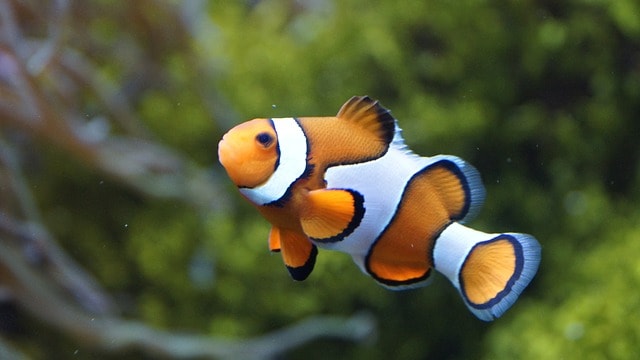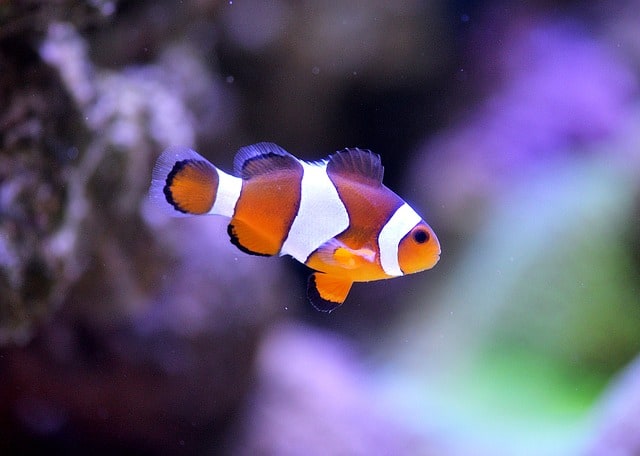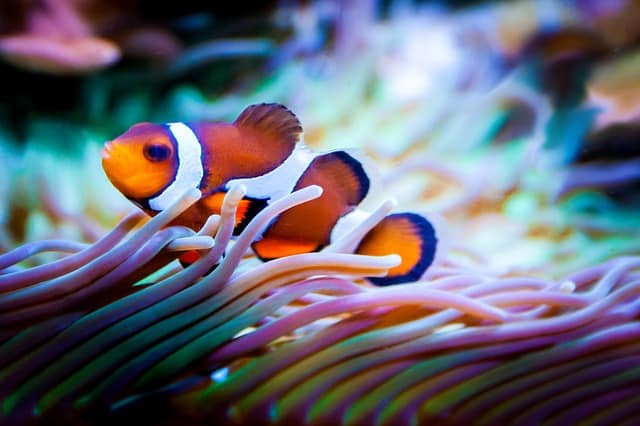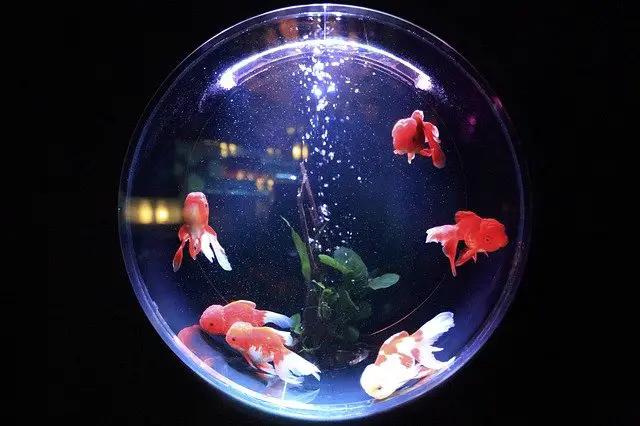The saltwater clown fish is such a mainstream marine fish now that I thought writing up a helpful clown fish fact list was in need. Personally I have had clown fish as pets for over 20 years.
I have mainly owned False Percula clown fish as well as tomato clowns, Black African clown fish and Sebae Clown fish. There are so many variations to choose from.
- Clownfish are a saltwater marine fish which cannot survive in freshwater.
- Clownfish are identifiable by their orange and red coloring complimented by 1 or more white stripes. Sometimes the stripes are outlined in black. Some clowns have yellow colors as well as some have more white than other colors.
- There are approximately 30 different types of Clownfish known to date.
- Clownfish originated in the Great Barrier reef of Australia as well as the Pacific Ocean, South East Asia and even Japan.
- Clownfish prefer warm water approximately 73 Fahrenheit to 80 Fahrenheit (22.7 Celcius to 26.6 Celcius).
- Clownfish are sometimes named Anemone fish because they can be found living among an Anemone’s stinging tentacles.
- A clownfish will perform what looks like a dance when it has first come across an Anemone that it would like to live in a symbiotic relationship with.
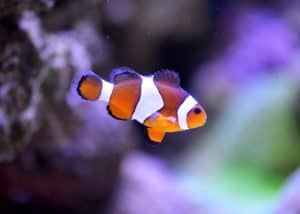
- If a tank does not have an Anemone then a hiding place should be available for the Clownfish so the fish will feel safe and protected.
- The Clownfish and its host Anemone live together in a symbiotic relationship. Symbiotic relationship means that both sides of the relationship benefit from the situation of being together.
- The Clownfish eats among the oral tentacles of the Anemone. The Anemone then eats any small bits of left overs the fish misses eating.
- Clownfish are Omnivores which means they will eat plant based food and meat as in living creatures.
- In the wild a Clownfish will eat algae, worms, plankton and even small crustaceans.
- In captivity a balanced diet is required. Clownfish will eat frozen brine shrimp, mysis shrimp, flake food and pellet food created for marine omnivores.
- The Clownfish is protected by a slimy coating from the Anemone which will sting any other predators that try to attach the Clownfish.
- Although they are mostly calm and passive fish, Clownfish are territorial and will protect their home if other fish try to move in on them.
- Clownfish will live in a large community or with a mate and their offspring.
- Clownfish are small fish and depending on the species will grow as large as 2” to about 5” on average.
- A Clownfish will live approximately 2 to 5 years in captivity. If taken care of properly the fish will live up to 8 years in captivity however the 5 year lifespan is more common.
- Clownfish can live 10 to 15 years in the wild.
- All Clownfish are born as males.
- The most dominant Clownfish in a community will turn into a female as all Clownfish are born as sequentially hermaphrodite.
- If you want to get into breeding Clownfish you should be aware that these fish can lay as much as 1000 eggs at a time.
- Clownfish eggs take approximately 8 to 10 days to hatch after being laid and fertilized.
- The survival rate for offspring is very high which means most fish that hatch will eventually grow up to be adults.
- Clownfish can live in captivity in a smaller aquarium however a larger tank should be used. I recommend a tank no smaller than 30 gallons for a pair of Clownfish. A 50 or larger would be better.
- Clown fish can be kept with other fish species such as Damsels, Angelfish, Blennies and Gobies, Tangs among some other calmer friendly fish.
- Clown fish tend to swim up and down in a wavy motion and do not venture very far from their home base.
- Clownfish with more of a red color have thin black bands on their bodies where clownfish that are more orange tend to have a thicker black band on them.
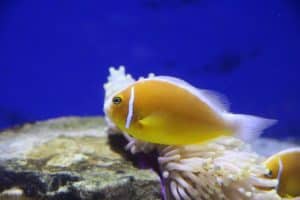
- Mixing different types (varieties) of Clownfish in an aquarium is not a good idea. They will fight until one of the fish dies.
- Clownfish are a good fish for beginners to the Salt water aquarium hobby as long as they have had some experience with freshwater fish first.
- If you are starting your first salt water tank and want to have a Clownfish as a pet then you are in luck because not only are these fish a pleasure to watch in the aquarium but they are a very hardy marine fish which is good for beginners.
- Most Percula Clowns and other varieties of this species are commonly bred in captivity now which means two things. The fish you buy at your local fish store might not have ever been in the ocean and the cost to purchase them is lower than if all the Clownfish were sourced from the Oceans.
- Larger fish such as Lion Fish, Groupers, Triggers, Eels and other predatory fish will attack and prey on Clownfish.
- Pink Skunk Clownfish is a variety of Clowns. This fish is a pink color with 1 narrow white stripe running down its back as well as 1 running just behind its eyes.
- The Saddleback Clownfish has a wide white stripe that resembles a horse’s saddle which is the reason this fish was named the Saddleback.
If you are interested in learning how to set up a new aquarium for Clown fish I suggest you read my article about setting up a new tank for Clown Fish.
Alternatively if you still need to purchase an aquarium I do have some recommendations for tanks which can be found by going to my recommended tanks page.
I also have a great article on hardy salt water fish for beginners if that interests you.
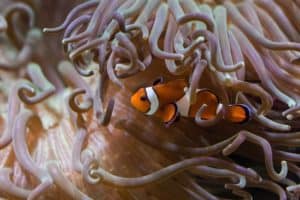
Related Aquariums-at-Home Articles
Does a Clown Fish Need Saltwater?
How to Maintain Salinity in a Saltwater Aquarium?


